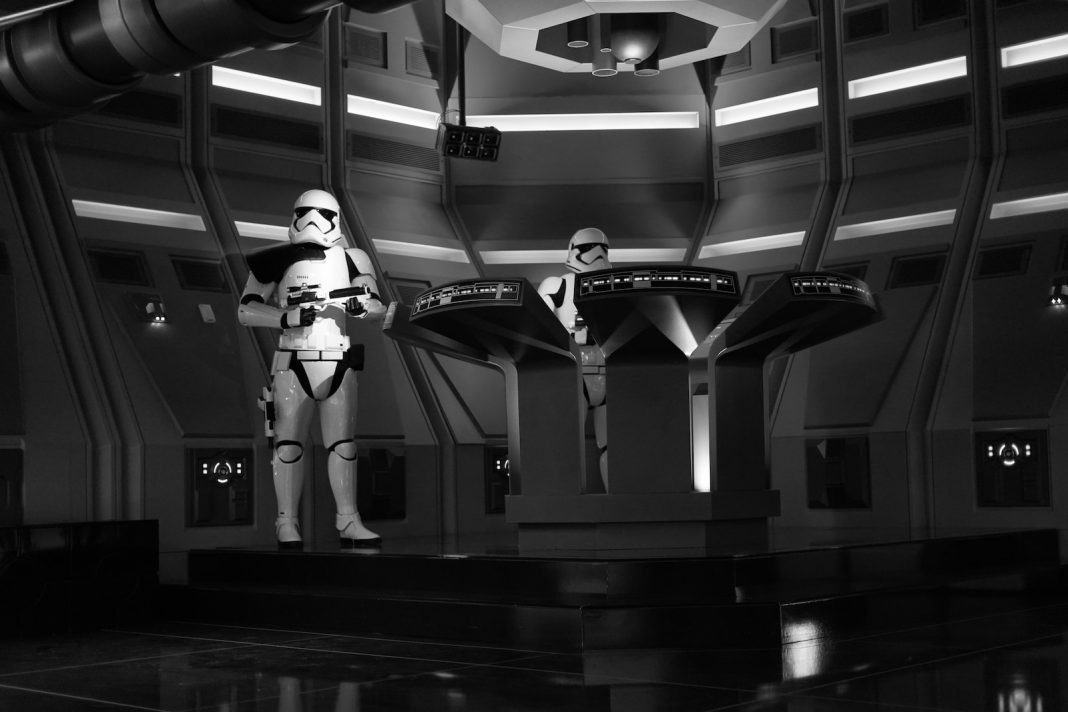In a galaxy far, far away, Star Wars fans have ignited a new debate that delves into the minutiae of the iconic Death Star—a debate that avoids the usual squabbles over sequel quality and representation. Instead, this discussion orbits a seemingly obscure technical aspect: the peculiar gravitational force within the colossal planet-destroying superweapon.
The conversation was sparked by a Star Wars enthusiast known as Squeakyweegee64, who, on the official Star Wars subreddit, shared an image posing an intriguing question to the fanbase. Does the Death Star’s gravity operate from top to bottom or from outside to in? It might appear to be a straightforward query at first, but the diversity of responses is as vast as the Star Wars universe itself.
Over the years, fans have meticulously dissected the Death Star, pondering its morality, its destructive capabilities, and the consequences of Luke Skywalker’s actions. Yet, the orientation of its internal gravitational pull had remained largely unexplored until now.
Arguments in favour of top-to-bottom gravity flooded the subreddit, with some enthusiasts pointing to official Star Wars media diagrams as evidence. Others cheekily asserted that their LEGO sets, mimicking the iconic Death Star, supported the top-to-bottom orientation. The debate quickly transcended the digital confines of the subreddit, spreading to other platforms like Threads, captivating fans across the galaxy.
On the opposing side of the debate, creative arguments emerged. Supporters of the outside-to-in gravitational theory referenced diagrams while acknowledging the consensus that the interior of the Death Star operated top-to-bottom. The discussion even touched on the configuration of laser turrets, suggesting an outside gravity akin to a planet’s gravitational force. Remarkably, the conclusion drawn by the fans was unprecedented: both perspectives could be right simultaneously, marking a unique moment in Star Wars history.
However, the debate took a more pedantic turn as some fans delved into the feasibility of natural gravity within a space station of such colossal proportions. Critiques emerged, questioning the impracticality of natural gravity in a structure that size, highlighting the likelihood of occupants floating around like they were on the moon. The proponents of artificial gravity argued for efficiency, suggesting that if gravity were artificially generated, it should adhere to a configuration familiar to most inhabitants.
Adding another layer to the discussion, critics didn’t shy away from highlighting the Death Star’s infamous vulnerability—a womp rat-sized exhaust port that led to its destruction. This sparked contemplation on the competence of the Empire’s engineers and opened the floor for a broader critique of the Death Star’s design flaws.
As Star Wars aficionados continue to dissect the nuances of the Death Star, this gravity debate underscores the depth of the fanbase’s commitment to the franchise. Whether pondering the ethical implications of the Death Star’s destruction or scrutinizing the intricacies of its gravitational pull, fans prove time and again that their passion for Star Wars knows no bounds.
In a galaxy where debates over sequels and representation often dominate discussions, this hilariously pedantic exploration of Death Star gravity stands as a testament to the enduring fascination that Star Wars holds for its dedicated and ever-curious fanbase. May the force of debate be with them.


